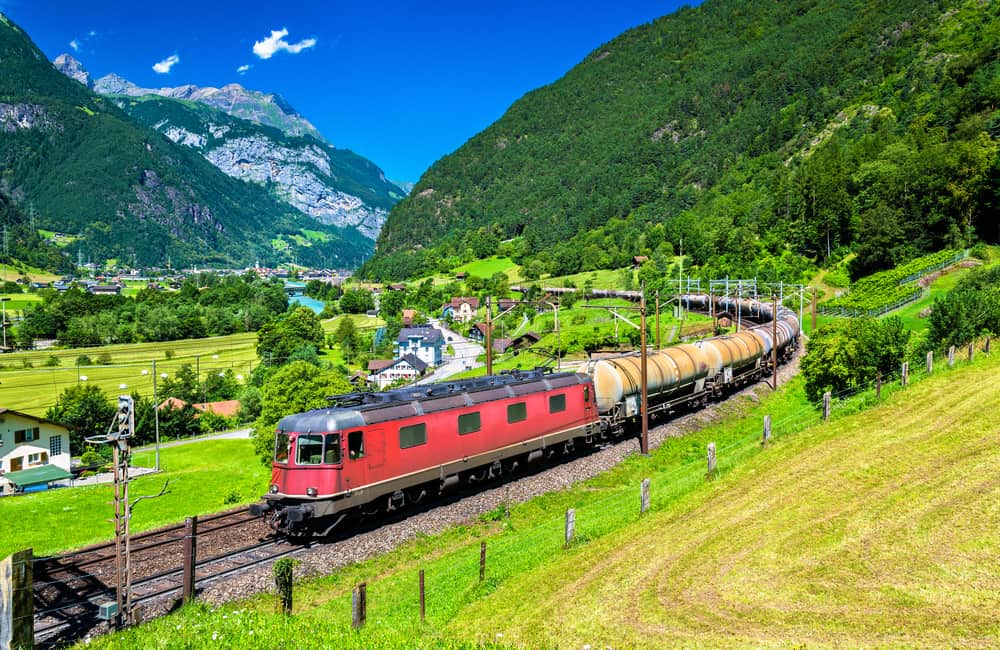
The onset of the new decade will usher in the International Maritime Organization’s (IMO) sulfur cap regulations to the maritime industry, spurring the global push to make transportation more sustainable and carbon-efficient. Within Europe, much has happened in terms of regulations and policymaking that look to steer a modal shift towards rail from hauling freight over road.
The “European Green Deal” is a landmark action plan unveiled by Ursula von der Leyen, the president of the European Commission (EC), to address greenhouse gas emissions (GHG). The goal of the European Green Deal is to achieve climate neutrality by reducing GHG to a minimum and offsetting all remaining emissions through climate protection measures.
In an EC meeting on Dec. 11, von der Leyen explained that the European Green Deal was about fostering a growth strategy that “gives back more than it takes away.” The deal offers a roadmap that encourages efficient use of resources, creating a circular economy that reduces biodiversity loss and decreases emissions.
In the context of the transportation industry, the deal prioritizes a 75% shift of EU freight traffic from road to rail and reduces GHG emissions by 90% by 2050. The European Parliament has advocated for a drastic increase in mid-term targets, pushing for a 55% reduction in overall GHG emissions (from 1990 GHG levels) by 2030 from the current 40% target for the same year.
Transportation’s share of Europe’s total emissions stands at 24% today, which if contained, could prove to be a massive impetus towards the EC’s vision of a sustainable tomorrow.
In the context of European rail transport, the segment already has a great deal in its favour. For instance, the railways do spectacularly well covering their variable costs and externalities like emissions, air and noise pollution through added charges based on distance travelled. Studies conducted by the EC suggests that rail transport’s externalities are small in comparison with other modalities, both for passenger and freight movement.
European railways also have a higher degree of electrification compared to other developed economies, making vast sections of rail lines environmentally sustainable. Four out of every five trains in Europe run on electricity, with the sector already going beyond the intended renewable energy target that the EU set for the transport industry by 2030.
However, a freight movement shift towards rail would require significant infrastructure investment because at this time, European railway systems are focused more on moving people than freight. The differences are glaring when the systems are compared to the American rail industry, which over the years has undergone structural changes that have enabled longer trains and heavier axle loads on their railroads.
The length of an average U.S. freight train is around 2,000 meters, with the longer ones exceeding 6,000 meters in length. In Europe, the length of trains is restricted to 750 meters – a diminutive length compared to U.S. trains. This is primarily due to a difference in perspective; the European rail system is fine-tuned towards moving people rather than freight. Longer trains are undesirable as it would be harder for trains to brake rapidly – a necessity for trains transporting people.
European rail also contends with restrictions on vertical height, which reduces the load that can be carried in a single rail car. Newly built rail cars in the U.S. top 7 meters from the rail – a full 30% higher than an average European rail car. Increasing the vertical height of cars would require Europe to invest in re-engineering height clearances across tunnels and also in bolstering rail lines, as they would have to take up heavier axle loads as railcars get bigger.
The European Green Deal could be a starting point for Europe’s transition from road to rail freight, but it is essential to look at the challenges that lie in front of the industry. Reforms from the EC would have to be followed up with strategic investment in the sector, which if materialized, can lead to a significant reduction in emissions across the transport sector.

